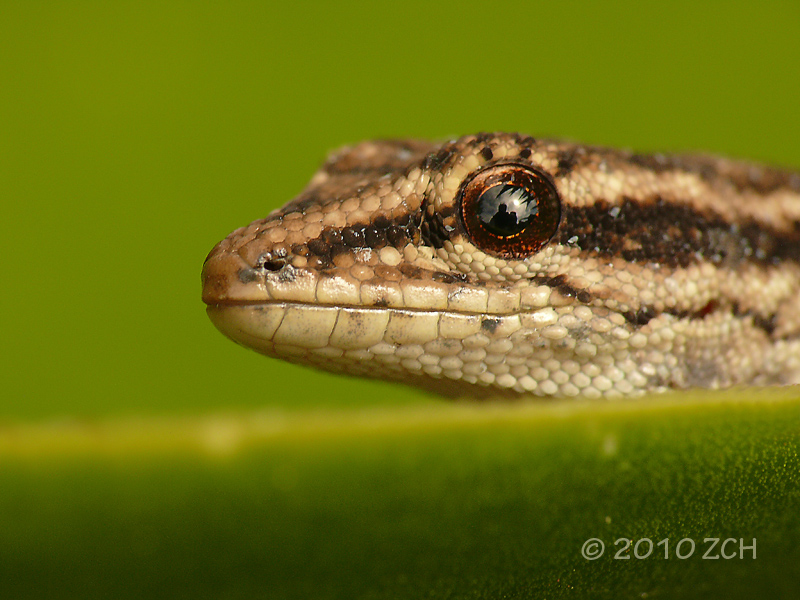Scalation same as in prairie skink; smooth. Adults
are brown or black with no pronounced color change on the sides with
five light narrow stripes down the back and sides. Five-lined skinks are
often found in small colonies around rock outcroppings in the open
areas on bluffs. Here, as in Minnesota, these lizards appear to be
absent on other parts of the same bluff or on similar bluffs in other
areas. With good management practices, these areas may be be inhabited
by new populations of five-lined skinks.
skink lizards, mostly
secretive ground dwellers or burrowers, that are represented throughout
most of the world but are especially diverse in Southeast Asia and its
associated islands, the deserts of Australia, and the temperate regions
of North America. The bodies of skinks are typically cylindrical in
cross section, and most species have cone-shaped heads and long,
tapering tails.

skink lizard pics

Females
guard the eggs and eat the ones that have spoiled (Oldfield and
Moriarty, 1994). The eggs hatch in August. I have observed E. fasciatus
hatching in Jackson County, IA. on August 21. There were two or more
nests discovered under shingles laying on the forest floor high up on a
bluff. All nests had females in attendance.

skink lizard pictures

skink lizard images

All
of Iowa's lizards are quick and rely on speed to escape when they are
out and about. The skinks look like small snakes slithering through the
brush as they move their bodies in a very serpentine way when they run.
One must use caution when trying to capture skinks.

skink lizard pictures

All
nests had females in attendance. Clutch size ranged from five to
twelve. The young were jet black with five thin, yellow lines down the
back and had bright blue tails. They were a little over 2 inches at
hatching.

One
must use caution when trying to capture skinks. Often one will end up
with nothing but a wriggling tail as the lizard scoots off to safety.
Skinks may also break their tails off by themselves by pushing it
against a solid structure. The tail will regenerate, but it will have no
pattern, will have slightly different scalation, and will never be as
long as the original one.
Iowa's lizards hibernate underground in
burrows they dig, and five-lined skinks hibernate in rock crevices and
tunnels. They usually begin hibernating in September.
Read more...















+lil+red+crab.jpg)














































